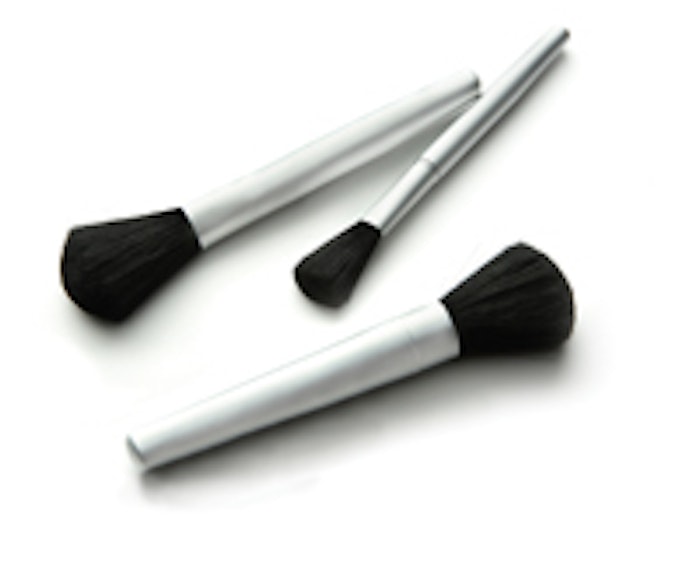
Collaboration has sped the cosmetic industry along—in some cases, collaboration within companies; in others, through intra-industry efforts. As always, regulatory constraints have also played an influential role in the industry’s progress. And it would be a glaring oversight to omit the purely scientific insight and discovery, coupled with advanced means to measure and test, present in the industry. In the end, these forces combined still must interact with the whim of the consumer, whether by fulfilling or initiating a market demand.
Collaboration
Many larger manufacturers in the industry hire a position or positions strictly dedicated to scout out inventions from any field that could apply to personal care. They look to paint and coatings, pharmaceuticals, nutrition, food and many others for technologies they can bring in-house, as well as outlets to which they could license out their own technologies to maximize on intellectual property rights. In fact, some raw material suppliers within the industry do not realize the implications of their own inventions, and therefore hired experts are paid to recognize this potential.
Chemists, formulators and R&D managers also scour various industries for ideas to apply in their own work; some follow patents issued, while others attend peripheral industry events. They innovate through interaction.
There is an interesting give-and-take when a company licenses a technology because it not only profits monetarily, but also it shares the science so that others can benefit—even if it is at a cost. After all, if more minds are using a technology, they can help to develop it, offer new twists on it, or solve some of the challenges of using it. Obviously, such an exchange looks good on paper, but politics can paint an interesting picture when it comes to claims of who came up with the invention first. However, the industry does seem to benefit from this collaboration, which is happening more often.
Obtaining licenses. Such interactions are evident in joint efforts occurring throughout the industry. Raw material suppliers often obtain licenses to manufacture specialized lines of products co-developed with other entities. In one specific example, a chemical giant signed an agreement with another company to develop processes and applications for nanoparticles by incorporating that company’s zinc oxide nanosuspension technology; this joint effort aimed to develop particles for pigments, polymers and other applications. Another inter-company agreement was initiated to promote the use of one company’s cooling agents with another’s delivery systems.
Selling intellectual property. Beyond buying into agreements, companies are selling the rights to use their intellectual property. As an illustration, one supplier made available for license a technology it developed that coats titanium dioxide and zinc oxide nanoparticles with a polymer so that the coating scatters UV light, rather than requiring inorganic compounds to absorb the UV and radiate it in a secondary form. The same technology was claimed to help disperse the composite nanoparticles or microspheres within an emulsion to provide a more even coating, in turn reducing the volume of composite required. The technology was offered for use in coatings, paints, plastics, ceramics, inks and fibers, and had potential applications in electronic materials, biomaterials and waste processing.
Acquiring business units. In a more aggressive approach, companies buy out divisions of other businesses that hold certain patents to which they want access. In one case, a major manufacturer acquired another company’s noncore business unit to combine with its own water-soluble polymers business, creating a new business specialized in the cellulose industry.
Joint alliances. Besides inter-industry agreements, alliances are often formed with academia, such as one chemical manufacturer’s agreement with Harvard University in Cambridge, Massachusetts. The company agreed to provide funding to the university, anticipated to be upwards of $20 million, during which both parties would pursue projects in applied physics, chemical biology, bioengineering and materials science, among other fields. In the end, if proof of concept is established in a research project, the company will be given the opportunity to further develop discoveries and innovations for possible commercialization.
In similar agreements, one developer of nanomaterials and additive technologies signed an exclusive licensing agreement with the U.S. Naval Research Laboratory, spanning multiple industries and broad patents in controlled-release nanomaterials. A partnership agreement also was announced between Cosmetic Valley and UNITIS for cooperation on regulations and information on raw materials.
Sometimes such agreements stretch from seemingly unrelated fields, expanding business into untapped market segments. As an example, one major cosmetics manufacturer signed a licensing agreement with a Milan-based fashion house to extend its presence to the fragrance market, serving as a new foundation upon which it could create and market fragrances and related products.
Regulatory
REACH. Consumer alert for ingredients in personal care products has increased dramatically. Some of this concern is due in part to a more educated, yet often misinformed, consumer. In any case, activist groups demand action and regulating bodies are prompted to respond. Thus, as new rules are introduced to the game, the personal care industry has become well-versed in reformulating—sometimes for better, sometimes for worse.
For example, the European chemicals industry launched its Registration, Evaluation and Authorization and Restriction of Chemicals (REACH) initiative, requiring that chemicals used in products that are sold in Europe be registered, or that only those chemicals that are registered be used in personal care formulations. Thus, unregistered chemicals may be replaced in a product, sending the formulator back to the bench to start again. The alternative is to formulate a work-around solution. In either case, regulation forces change.
As the REACH legislation has rolled into action in Europe, its global magnitude has begun to be realized. For example, the legislation is written in such a way that it calls into question the basic fabric of the personal care industry, such as: What is a chemical? A polymer? How does one register ingredients that are by-products of reactions, and whose names are designated based on the context of the industry in which they are applied? How much will this cost the industry? By forming consortiums to absorb registration costs, how can companies maintain any confidential product information? Will this regulation affect international trade?
Initially, the REACH regulation was written for the overall chemical industry, but its impact in more specialized market segments, such as personal care, was not explored, nor was an industry expert consulted.
In a statement made during the Ohio Valley Society of Cosmetic Chemist’s (SCC) dinner meeting in February 2006, Eric Abrutyn, chairman of the International Nomenclature of Cosmetic Ingredients (INCI) Dictionary committee, commented, “I see the industry changing. Some of it is subtle, but I feel a big change that will affect this [INCI Dictionary] committee.” He added that, in the future, the cosmetic industry needs to “remain diligent and transparent to avoid imposition of government regulations.” The REACH legislation is a prime example of why, during all stages of regulatory review and law-writing processes, it is vital that the appropriate industry experts and representatives participate to ensure that the industry’s interests are protected.
Animal testing. Questions have been raised about whether REACH is compatible with the European Union (EU) ban on the testing of personal care ingredients on animals. Although it is generally agreed that the ultimate goal is to reduce the usage of animals for testing, this topic of debate is yet another challenge the industry continues to face and must strive to improve upon. Whereas the EU protests the use of animals for the testing of cosmetic ingredients, the U.S. Food and Drug Administration (FDA) requires such testing be performed before a product is deemed safe for human use and approved for sale on the market.
In a step to close this catch-22 gap, a Transatlantic Economic Council (TEC) meeting was held Nov. 9, 2007, in Washington, D.C., with the hopes of moving toward harmonization between the EU and the FDA. It aimed to reduce regulatory barriers to trade, protect intellectual property rights, ensure secure trade, integrate financial markets, promote innovation and technology, and encourage investment. Reportedly, a special focus was given to the development of animal testing alternatives, and the need to intensify efforts internationally to ensure effective validation and acceptance of alternative testing methods.
Sun protection. Country to country, regulating bodies cannot agree about sunscreen actives and their allowable combinations, making the concept of globalization nearly unreachable. In consideration of the many factors relating to sun protection—such as whether or not UVA and UVB exposure should be measured separately, in vivo versus in vitro testing, the relevance of the standardized dose used to test sun protection compared with actual product use by the consumer, and how to label a sunscreen so that the consumer understands it—the FDA released its long-awaited proposed changes to the final sunscreen monograph.
Industry expert David Steinberg covered the proposed changes at the Florida SCC Sunscreen Symposium held in September 2007. The biggest changes relate to testing requirements and labeling, explained Steinberg. The FDA now requires companies to run both in vitro and in vivo tests. In addition, the definition of SPF has been amended to mean sunburn protection factor, and a new four-star rating system will be used to make the claimed product protection easier for consumers to understand. In addition, if a sunscreen product does not provide at least a low level (one star) of UVA protection, the FDA is proposing to require the product to bear a “no UVA protection” marking on the front label near the SPF value.
Also, a “Warnings” statement in the “Drug Facts” box will be required from all sunscreen product manufacturers. The warning will say: “UV exposure from the sun increases the risk of skin cancer, premature skin aging and other skin damage. It is important to decrease UV exposure by limiting time in the sun, wearing protective clothing and using a sunscreen.” The warning is intended to increase awareness that sunscreens are only one part of a sun protection program.
In a recent article,Steinberg commented he “agrees with several points in the proposed rules (PR), but a few things may need to be changed.” He illustrated that the FDA has taken an apparent positive position on UVA testing and labeling and commented that the industry likely will not be happy since the producers have their pet method they would like to see adopted. “In reality, after carefully reading the entire discussion by the FDA, I feel the agency did a great job. The new PR should become the global standard because it corrects huge gaps in the EU, Japanese and Australian adopted methods.”
In part two of this article, which will appear in the October 2008 issue of Skin Inc. magazine, discover how different consumer market segments are growing and changing. The segments include skin care, sun care, skin lightening, naturals, green, wellness/health and nutricosmetics. Also discussed are delivery and preservation trends, as well as the current state of actives.










